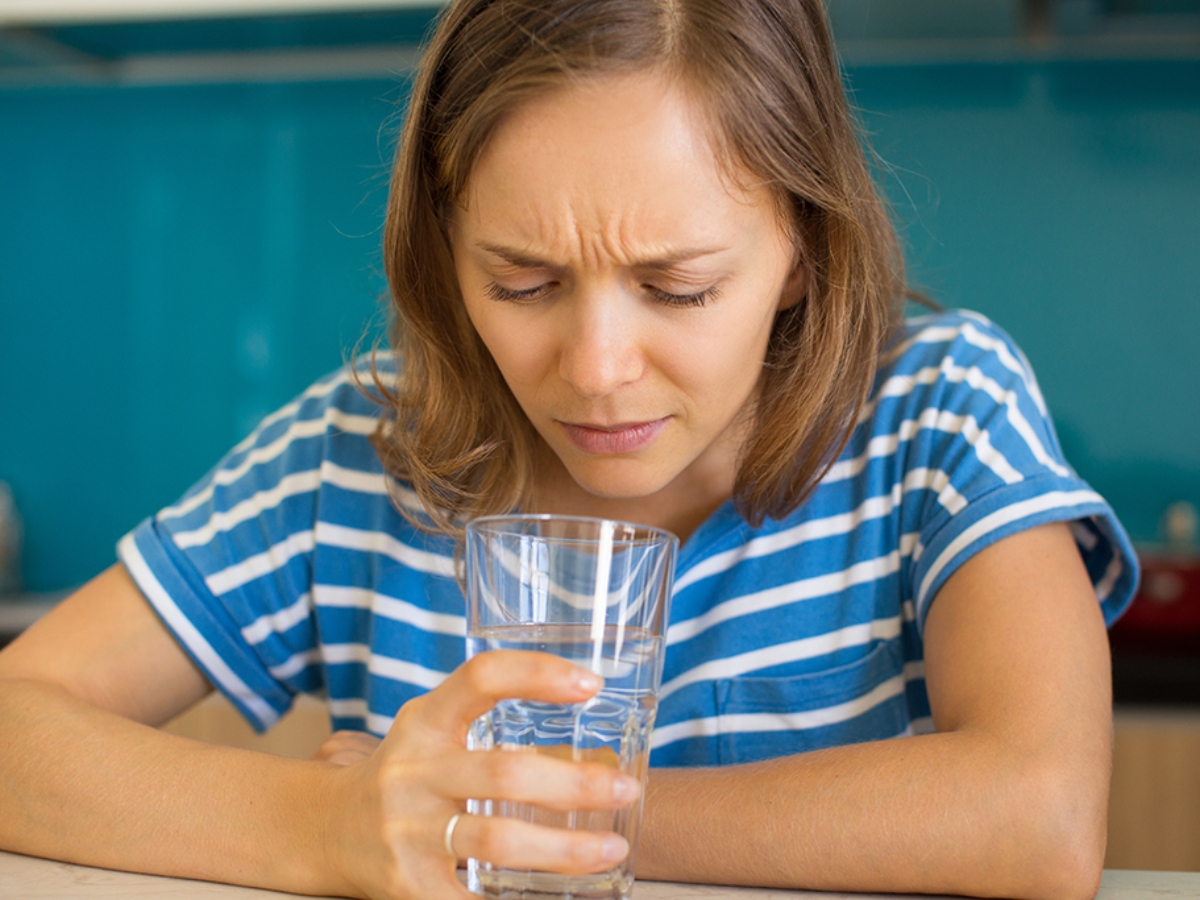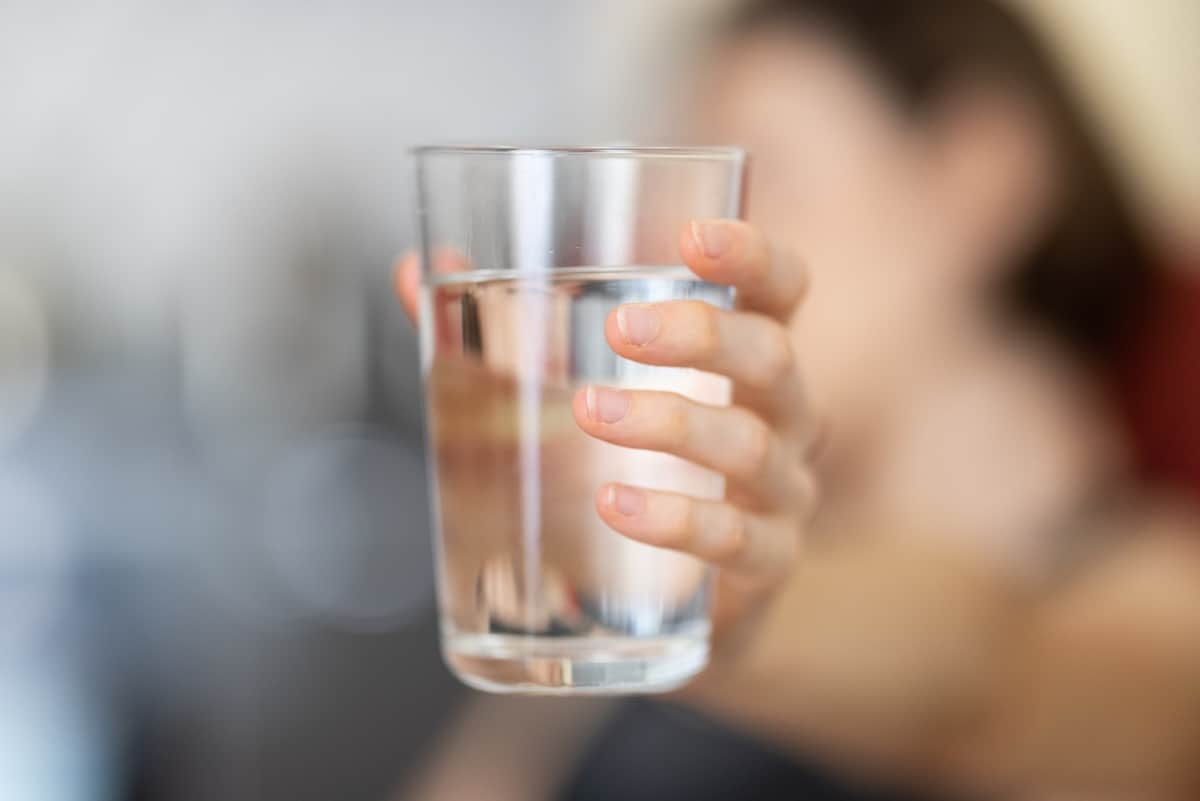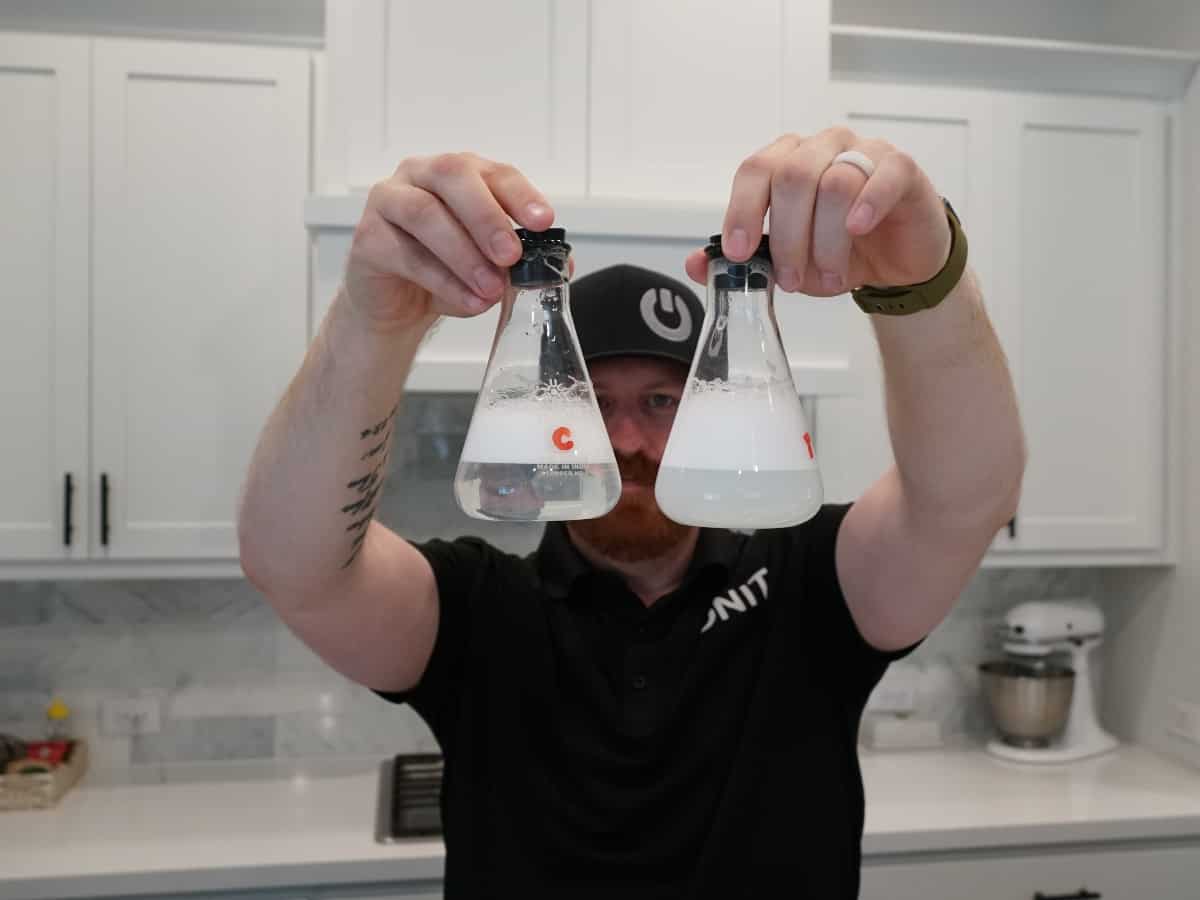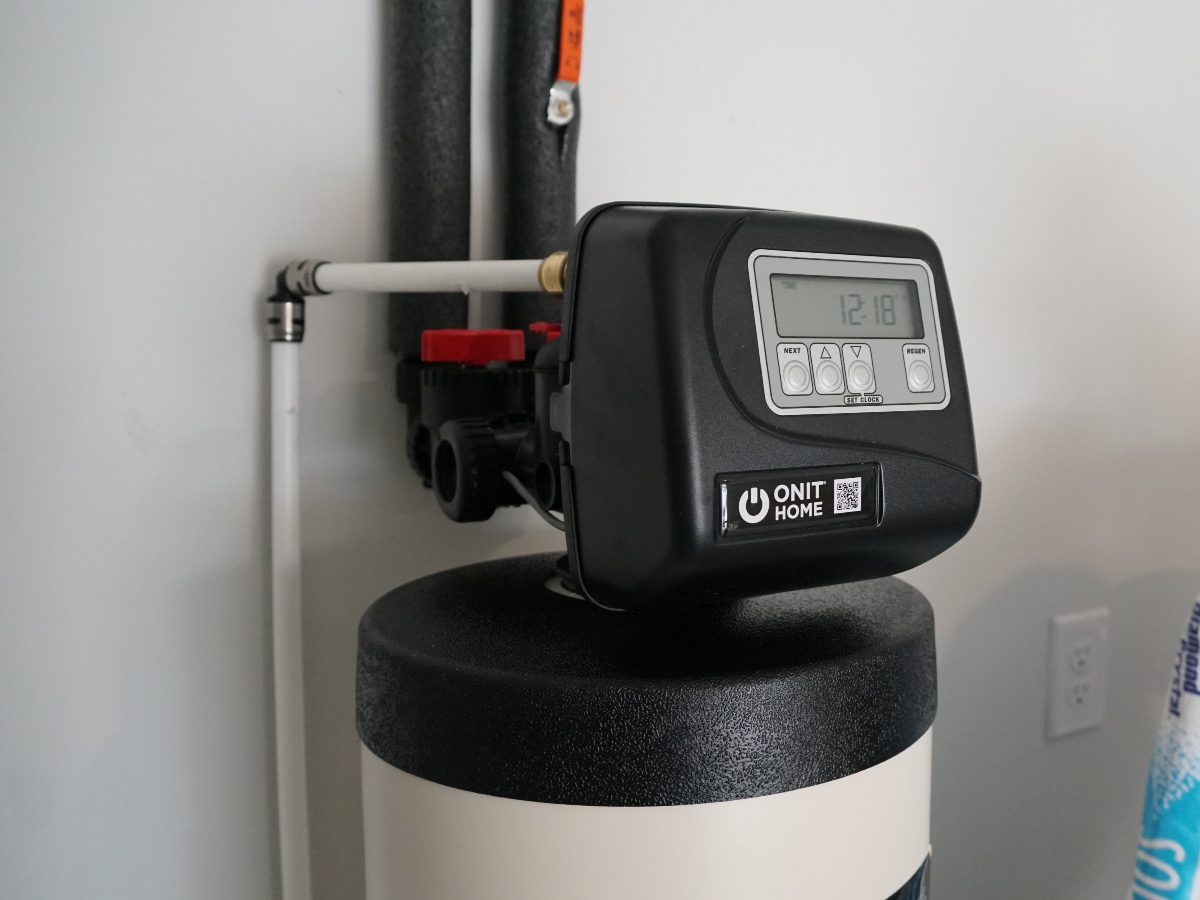Are you worried about copper contamination in your water? Is copper in water bad for you?
In a nutshell, copper is not bad for you if it’s within the recommended limits. The natural amount of copper in water is not usually enough to cause harm. However, it can sometimes be a problem if the water is corrosive or if there are high levels of copper. Copper is crucial in our bodies, as it boosts nerve cells’ health, makes red blood cells, and boosts immunity and heart health. However, consuming too much copper can lead to mild to severe health effects.
Statistics show that copper in drinking water can increase by 4 to 45 percent more copper in a person’s diet than in food sources. That’s why checking copper levels in your drinking water is essential. This article looks at the query “: is copper in water bad for you?” analyzing its health effects, and possible filtration techniques.
What Is Copper?
Copper is an essential mineral that our bodies need in small amounts to function properly. However, too much copper can be harmful. Copper is a reddish-brown metal in small amounts in the earth’s crust, constituting 70 parts per million. It is one of the oldest metals known to man and has been used for thousands of years. When exposed to air or water, the copper turns blue/green.
Copper is a conductor of electricity and heat used in various electrical and construction applications. It’s also used in the treatment of different medical conditions. Furthermore, copper is used in producing various products, such as jewelry, pipes and tubes, and automobile radiators. Foods such as organ meat, seeds and nuts, shellfish, nuts, and many others are good sources of copper.

Is Copper in Water Bad for You?
It depends on the level of copper in your water. Copper in low levels is crucial for the normal functioning of your body. According to the EPA, the Maximum Contaminant Level Goal (MCLG) of copper in drinking water is 1.3 mg/L, or 1.3 parts per million (ppm). Anything higher than this is harmful to your health.
What Are the Health Effects of Copper in Water?
When your water exceeds the set levels, it makes you exceed the allowed limits, posing health risks. Short periods of exposure to excessive copper levels in water can lead to the following:
- Vomiting
- Nausea
- Stomach cramps
- Diarrhea
- Food intolerance
- Abdominal pain
Prolonged exposure to excessive copper levels in water can lead to severe health issues. These health problems are more common in people with Wilson’s or Menke’s disease and children with cirrhosis.
- Liver damage
- Low urine production
- Kidney damage
- Hemolytic anemia
- Cessation of menstruation
- Gallstones and renal stones
- Acute renal failure/damage
How Does Copper Get Into the Water?
Copper occurs naturally in rocks and soil. Weathering copper-bearing rocks can lead to copper leaching and dissolving in surface and groundwater. The contaminated water can then be transported to another location. However, in most cases, these levels of copper in water are not harmful to humans.
In addition, human activities can release copper into the environment. Mining wastewater, industrial pollution, and domestic wastewater can easily contaminate water sources. Public water systems monitor the copper levels in water and treat them if they are high to reduce corrosion.
The primary source of high levels of copper in drinking water is the corrosion of household plumbing systems, including pipes, faucets, and fittings. This happens specifically if you use copper or brass water fixtures. Water quickly absorbs copper when it flows through plumbing materials. The levels in the water can depend on the following:
- Water temperature: Warmer water is more likely to have dissolved copper from pipes and fixtures than cold water.
- Acidity levels: Copper quickly corrodes in acidic water (pH below 7).
- Age of the plumbing system: Older systems are more likely to have corrosion and leaching of copper from pipes.
- How long the water has been standing in the pipes: When water stands in the water lines for long, for example, overnight, copper can leach into it. This is more likely to happen if the water is acidic.

How to Reduce Copper Exposure
Here are a few tips to reduce copper exposure in your home:
- Avoid using copper pipes, especially if you have acidic water.
- Reduce the high consumption of food that contains too much copper.
- Let the water that has sat in pipes run for about one minute. Or flush the toilet.
- Use cold water and avoid hot water from the hot water tap for cooking and drinking if you notice corrosion in your pipes.
- Replace old copper pipes.
- Invest in a high-quality filtration system
Is Drinking Water Tested for Copper?
The water from the public water system is regularly tested for copper, and the results are accessible to the public. The water is treated if the copper levels exceed the recommended limits. So, if you get water from the municipality and find it has high levels of copper, the problem could be your plumbing system. However, you should consult your water provider if you use plastic instead of metal pipes. They could be using copper pipes to supply water into your home, which can lead to contamination without their knowledge. If you have a private well, the water quality in your home solely depends on you. If your well has acidic water, be sure to take steps to reduce the consumption of excess copper.
How to Detect Elevated Copper Levels in Drinking Water
You don’t have to worry much about high copper levels in your drinking water if you’re on municipal water. However, testing your water is good to ensure the pipes do not leach copper into the water. If you have well water, it’s a good idea to get your water tested regularly to ensure it’s safe to drink. There are a few ways to detect elevated copper levels in your drinking water:
- You notice a metallic taste in your water.
- A blue/green color change can mean higher amounts of copper in water, especially if the pipes are new.
- Notice stains on your water fittings.
- The water is cloudy
- Test your water

Testing Water For Contaminants
You can purchase a do-it-yourself testing kit from a hardware store or online. You can also have your water professionally tested. If you opt for DIY testing, follow the instructions carefully.
How Can I Remove Copper from My Drinking Water?
One of the best ways to reduce copper in your water is by installing a reverse osmosis (RO) system. You can also use distillation, ultrafiltration, and ion exchange. The National Science Foundation (NSF) indicates that water treatment systems certified to reduce copper in drinking water are NSF/ANSI 53 and NSF/ANSI 58. The NSF/ANSI 53 is approved for lowering pollutants that have health effects, while the NSF/ANSI 58 is for reverse osmosis systems.
Let a professional analyze your water and detect the cause of the problem. They can also recommend the best system you can install in your home. Here are your options:
- Reverse osmosis: RO filters use a semipermeable membrane to remove pollutants. The membrane has tiny pores that allow clean water to pass, leaving contaminants on the other side. RO systems can remove 97% – 98% copper.
- Distillation: Distillation involves boiling water and condensing the resulting vapor into water. Since the water evaporates, it leaves copper in the boiling chamber since it cannot evaporate. This results in clean water moving to the condenser, leaving most contaminants behind.
- Ultrafiltration: Ultrafiltration uses a semipermeable membrane to remove contaminants from water. Water is forced through the membrane, and the pollutants are filtered out.
- Ion exchange: Ion exchange removes impurities from water by exchanging them with ions that won’t change the water quality. Ion exchange begins when water molecules come in contact with the surface of an ion exchange resin. This resin is made up of tiny beads coated with charged ions. As the water molecules come in contact with the beads, impurities are exchanged for the charged ions on the beads. An excellent example of ion exchange is a water softener.
Can a Whole Home Water Filtration System Remove Copper From My Water?
Yes. A whole home water filtration system can remove copper from your water and other contaminants to help keep you safe. The ONIT’s entire home system can remove up to 99.9% contaminants, leaving you with cleaner, safer and tastier water. No need for water pitchers anymore as this system is installed where the main water line enters your home. This ensures you have clean water from all sources inside your home.

Remove Contaminants From Your Drinking Water Using ONIT’s Home Water Filtration System
Is copper in water bad for you? Copper in water is harmful to you if it exceeds the MCLG set by the EPA. Copper is essential for your body, but only in small amounts. Your home’s plumbing system is the main culprit behind elevated copper levels in your water. Installing a whole-home water system can help eliminate 99% of your water’s copper and other contaminants, whether from a public system or a private well.
ONIT Home provides a system that will give you peace of mind by eliminating contaminants that can cause health issues. Our system includes a water softener, UV light purification, a whole-home water filter, and a RO system.
We can customize a water filtration system that meets your home’s needs, no matter your budget. Need clean water? We’re ONIT! You can request a quote online today or call us at 1-833-433-0331 for more information.



